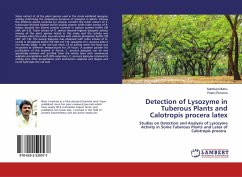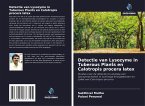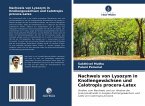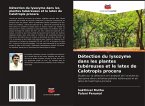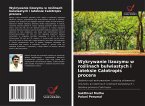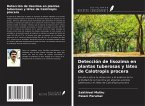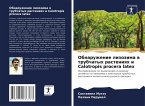Tuber extract of all the plant species used in the study exhibited lysozyme activity confirming the ubiquitous presence of lysozyme in plants. Among the different plants screened for protein content the tuber extract of S. tuberosum showed highest buffer soluble protein while tuber extract of R. sativus showed the lowest protein content in sodium acetate buffer (50 mM; pH 5.0). Tuber extract of R. sativus showed highest lysozyme activity among all the plant species tested in this study and the activity was increased when the tuber was extracted with sodium phosphate buffer (50 mM; pH 7.0). The lowest lysozyme was observed with tuber extract of D. carota in phosphate buffer (50 mM; pH 7.0). Lysozyme of C. procera latex is not thermo labile. It did not lose much of its activity when the latex was incubated at different temperatures for 24 hours. A positive pointer for purification of this enzyme in future. C. procera lysozyme can be was specifically isolated and purified from the whole latex with ammonium sulphate precipitation with 95% saturation. C. procera lysozyme retained its activity even after precipitation with ammonium sulphate and dialysis and could hydrolyze the cell wall.
Bitte wählen Sie Ihr Anliegen aus.
Rechnungen
Retourenschein anfordern
Bestellstatus
Storno

